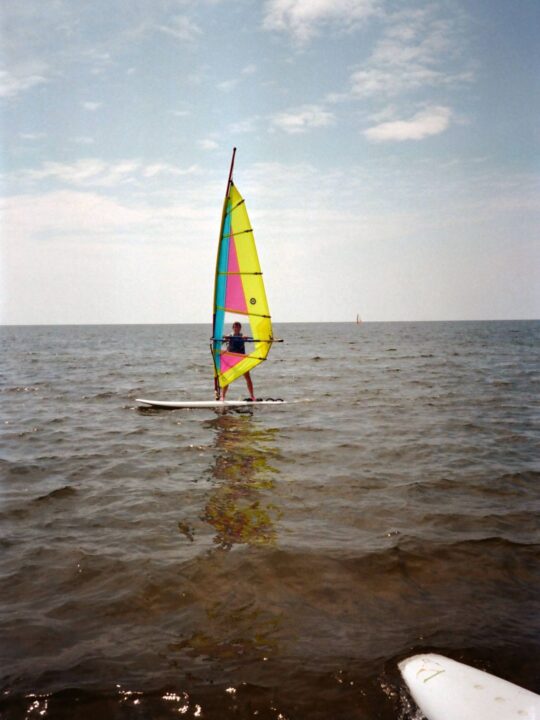Have you ever wanted to surf and sail at the same time? Well, thanks to windsurfing, you can.This combination sport appears easier than it looks, so if you’re not a pro, don’t worry. And if you are, you’re welcome here anyways. I created this beginner’s guide to teach newbies (and those who just want to refresh their memory) exactly how to windsurf. So join me as we cover everything from basic preparation to navigation.
Modern day windsurfing is awesome, but I have these vintage photos of my parents windsurfing which I’ve included for your enjoyment 🙂 The outfits and sails were so much more vibrant and exciting! Most of these photos were taking in the windsurfing mecca that is The Outer Banks, but there are plenty of epic locations you can learn how to windsurf at.
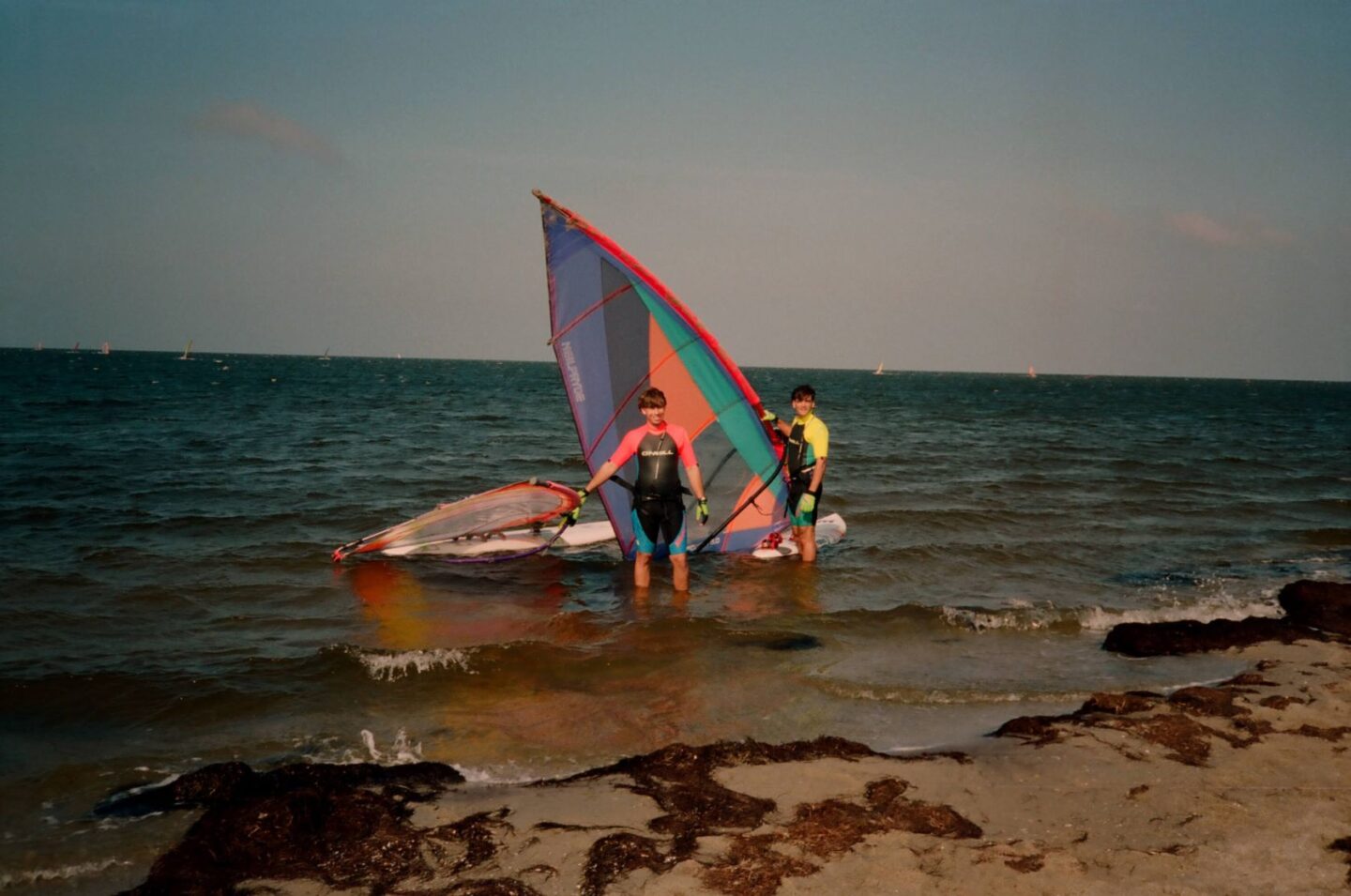
Windsurfing – What is it? And how does it work?
Windsurfing is exactly what it sounds like – you’re surfing the wind.
Using a sail (attached to a board), you adjust your hands, legs, and feet to steer through the water, using the wind to propel you forward.
If you’re pretty well-balanced and can understand the direction of wind, chances are, you’ll be a natural!
But there are a few things you might want to consider before you set sail – so here’s what’s important.
1. Learning the equipment
The first step in learning how to windsurf, is learning your equipment.
There’s no worse way to encounter problems than to be unsure of what you’re doing, and this is true for both.
It’s always better to be over prepared than under, and in any new venture, you’ll want to make that your mantra.
Windsurfing requires preparation, and before you even think about getting on your board, you’ll want to really take the time to get to know the parts.
Luckily, there is tons of literature on how to correctly identify the parts of, and simultaneously use both, so take full advantage of that!
And if you’re not in the business of teaching yourself, there are schools out there with certified instructors who will gladly show you how.
Either way, education is key!
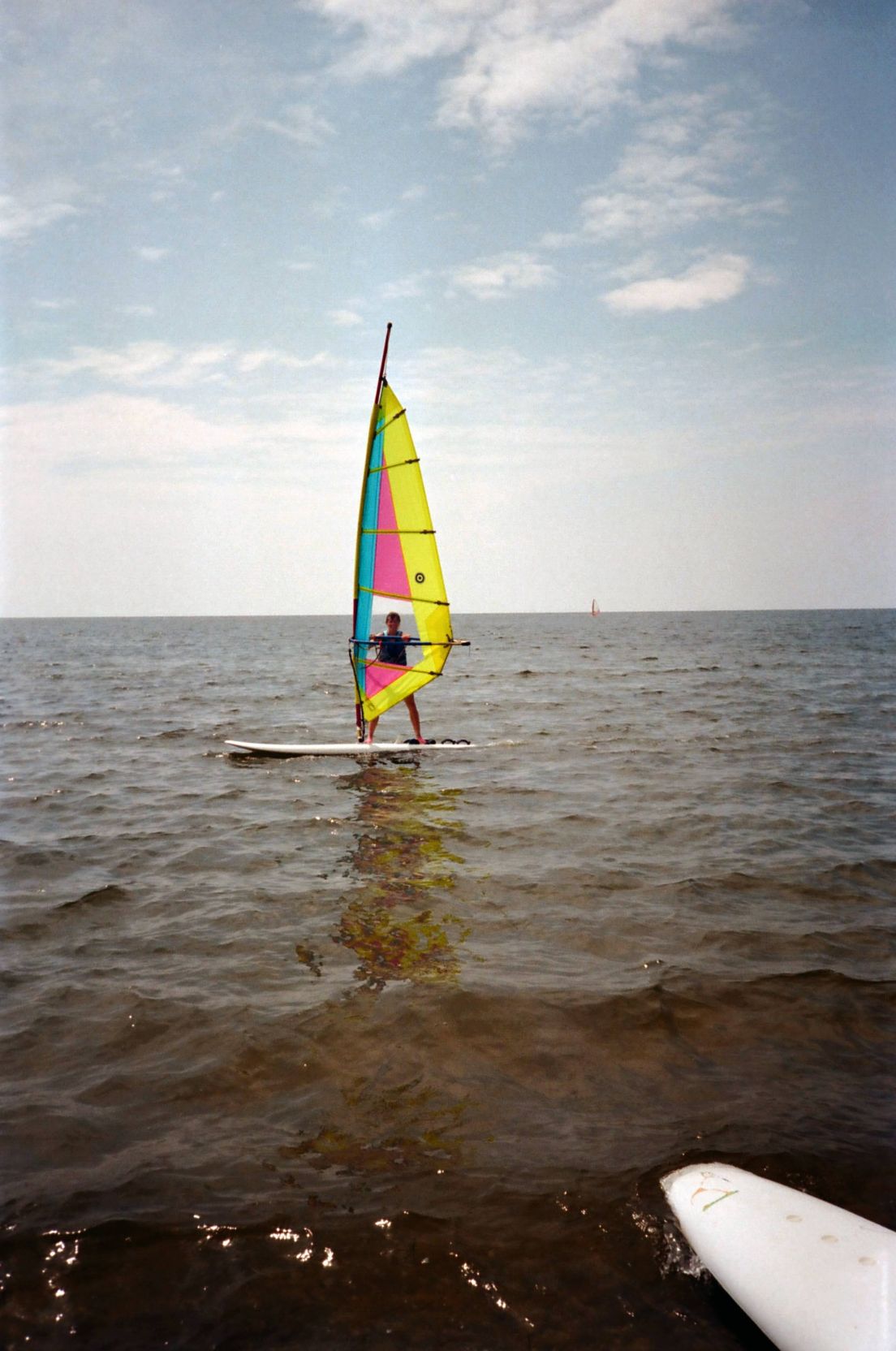
2. Choosing the right equipment
Okay, you understand the basics… Now what?
You’ll need a board.
And whether you rent one or buy one, you’re going to want to stick to something entry level that’s designed for stability and ease.
Entry level boards offer effortless steering and wider decks, so that small mistakes won’t affect your overall performance.
And you’re going to want to choose one that’s correct for your weight.
Having the right size board will not only help you stay afloat, but it’ll make for a smoother ride.
If you want to take extra precautions, helmets, booties, floatation devices, whistles (in case of emergencies) and wetsuits are also widely available and used.
3. Hitting the waters
If you’ve learned as much as you can, put safety measures in place, and chosen your desired gear, the next step seems pretty obvious – it’s time to hit the water.
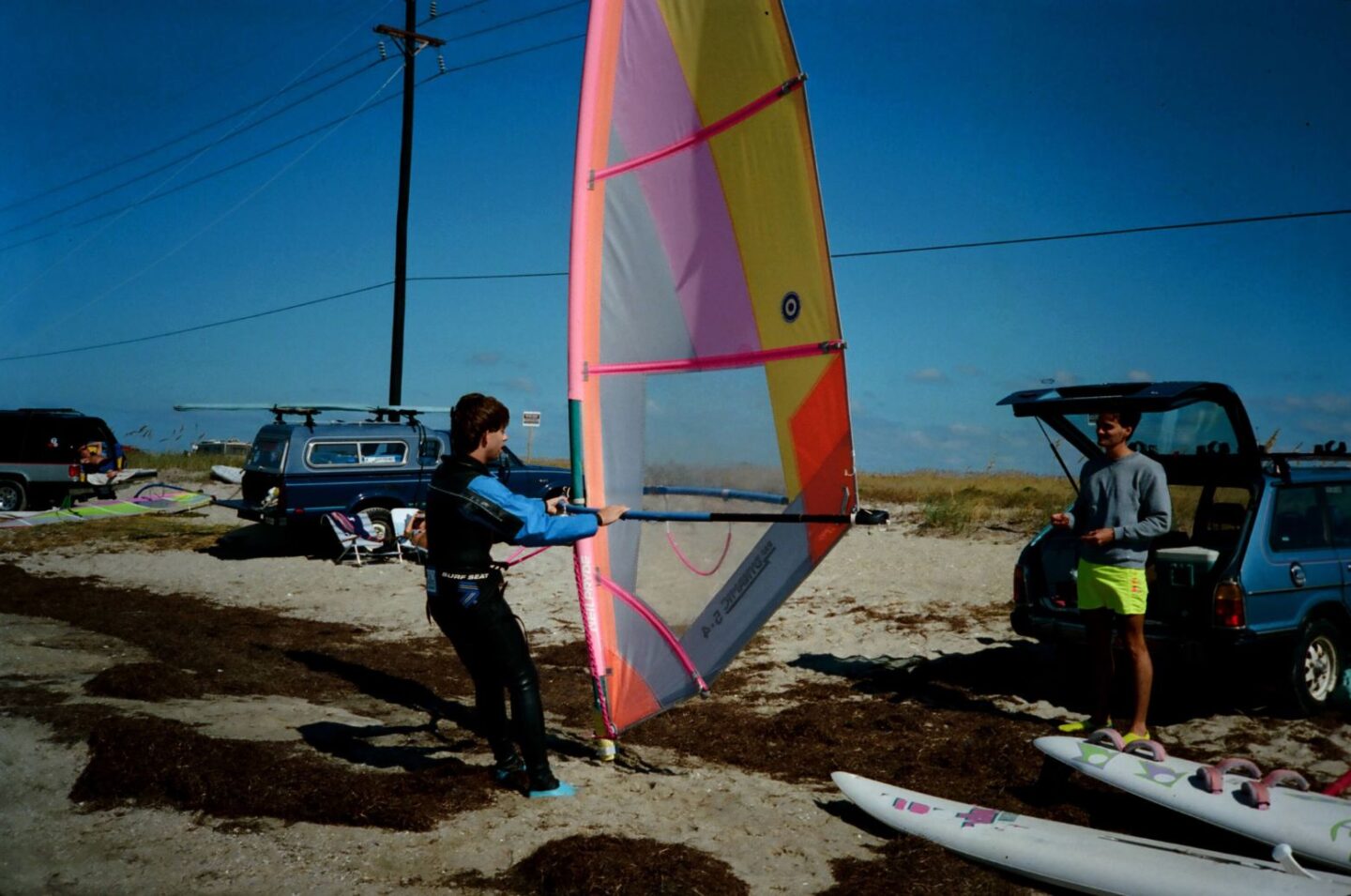
Getting ready to test out windsurfing
Before you dive in, make sure to check the weather.
And while that may sound silly, the last thing you’ll want to do is to run into thunder, lightning, high winds, or a combination of all three.
Even if it looks like the chances for unpleasant weather are low, remember that things can change in an instant.
I can’t tell you how many times I’ve been caught in weather I wasn’t prepared for, and it’s not fun.
But if all looks good, you’re going to want to double check your local rules and regulations and find a safe spot to launch.
Once you get to your spot, check again for any obvious signs of danger, and if the coast is clear, go for it!
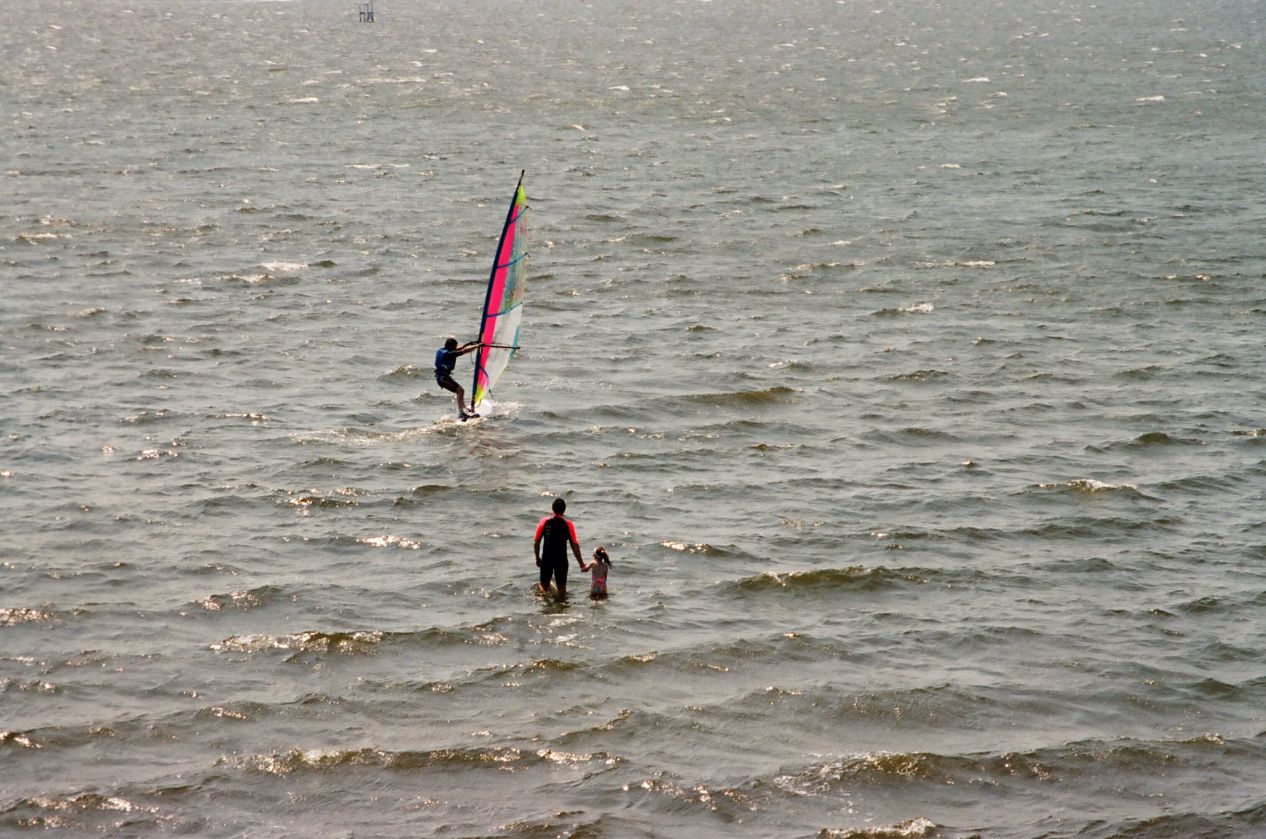
Testing it out
This is the funnest part of learning how to windsurf.
You’ll want to swim out with the board to a place where you feel the most comfortable.
When you’re ready, take the sail in your hands, stand up on the board, and position one foot in front of the mast, and the other foot behind (so that they’re angled shoulder width apart).
Remember to stand in the center, with your arms straight, back straight, knees slightly bent, and butt tucked in.
You’ll want to keep the mast at a right angle to the board, which will help you catch the wind.
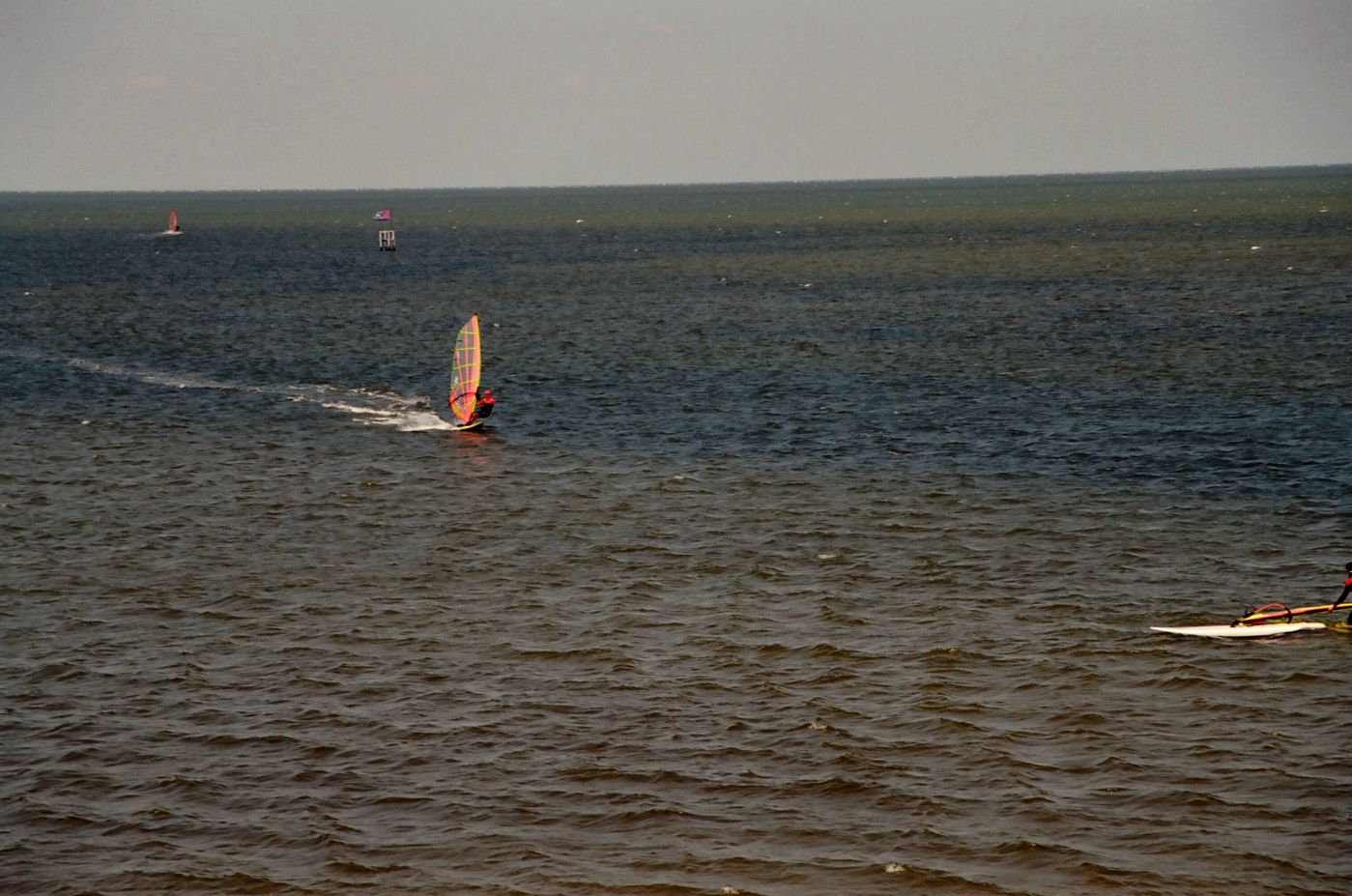
Setting sail
Once in position, make sure to keep your sail parallel to the wind, and bring it in slowly using your backhand to “catch” the wind and propel yourself forward.
If you want to slow down, allow the wind to pass through by resting your back hand to let the sail out.
Always remember to keep your front hand on the sail to avoid dropping it in the water, or injuring yourself, and even though it’s human instinct to tense when panicked, try to keep a comfortable grip on the sail at all times.
This will help avoid catching unwanted wind, and setting off in the wrong direction.

You’re Ready to Windsurf!
That’s it!
Remember to take the time to study the basics, learn your gear, check the weather, understand potential hazards, and designate a safe launch spot.
Beyond that, nothing quite teaches you something like having to get out and do it yourself.
So my best advice is to get out there and see where it takes you – just do it as safely and responsibly as possible.
Remember that nothing comes easy without practice, so do your best to stick with it, even if it means that you fall more than you stand.
And if I don’t run into you out on the water, make sure to keep me updated through Instagram, Pinterest, and TikTok! I’m sure you’ll learn how to windsurf in no time.

